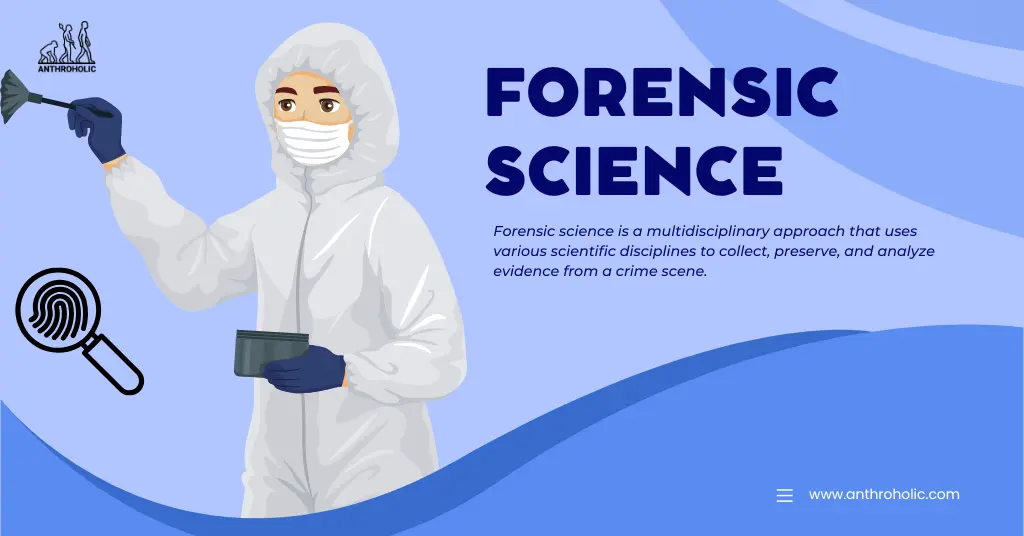Ever wondered what sets forensic science apart from the usual laboratory pursuits? It’s not just about microscopes and meticulous analysis. Forensic science occupies a peculiar niche, demanding both rigorous scientific method and a keen awareness of legal parameters. This unique confluence of disciplines crafts a field that’s fascinating, challenging, and undeniably crucial to the pursuit of justice.
Let’s delve into the distinctive facets that render forensic science a singular scientific endeavor.
1. The Interplay of Science and Law: Navigating a Dual Mandate
Forensic science does not exist in a vacuum. Traditional science strives for objective truth, often unburdened by immediate societal ramifications. In contrast, forensic science operates within the adversarial system of law. Every analysis, every conclusion, has the potential to impact a legal outcome. This dual mandate demands a profound understanding of both scientific principles and legal procedures.
Consider the admissibility of evidence. A novel scientific technique might hold immense promise, but it must pass stringent legal tests, such as the Daubert Standard in the United States, to be considered valid in court. This standard assesses the reliability and relevance of scientific evidence, scrutinizing factors like error rates, peer review, and general acceptance within the scientific community.
The forensic scientist, therefore, must be adept at communicating complex scientific findings in a manner readily comprehensible to judges and juries, individuals often lacking specialized scientific backgrounds. Clarity, precision, and an absence of jargon are paramount. Misinterpretation can lead to miscarriage of justice.
2. Contextual Bias: The Shadow in the Lab
Traditional scientific experiments aim to minimize bias through controlled conditions and blinded studies. Forensic science, however, often operates within a context rich in information. A fingerprint examiner might know details about the suspect, the crime scene, and other evidence. This contextual information can introduce bias, consciously or unconsciously, influencing the interpretation of ambiguous data.
Studies have demonstrated the potential for contextual bias to affect forensic decisions, even among experienced professionals. Mitigation strategies, such as sequential unmasking (presenting information in a specific order to reduce bias) and blind proficiency testing, are crucial to ensuring objectivity.
The inherent subjectivity in certain forensic disciplines, such as handwriting analysis or bite mark comparison, further exacerbates the risk of bias. Rigorous training, standardized protocols, and a commitment to cognitive awareness are essential to combat this insidious threat.
3. The Destructive Nature of Analysis: A Finite Resource
Unlike many scientific disciplines where samples can be preserved or replicated, forensic analysis often involves destructive testing. DNA extraction, for example, can consume a significant portion of a biological sample, leaving less material for subsequent analyses. This limitation necessitates careful planning and prioritization of analyses.
The principle of Locard’s Exchange Principle, which posits that every contact leaves a trace, underpins much of forensic investigation. However, the evidence recovered can be fragile and easily compromised. Chain of custody protocols, meticulously documenting the handling of evidence from collection to analysis, are crucial to maintaining the integrity of the findings.
Technological advancements, such as non-destructive imaging techniques and microfluidic devices for DNA analysis, are helping to minimize the destructive nature of forensic examinations, allowing for more comprehensive analyses from limited samples.
4. The Time Sensitivity of Evidence: A Race Against Degradation
Evidence deteriorates over time. Biological samples degrade, fingerprints fade, and chemicals decompose. This temporal element necessitates rapid response, proper preservation techniques, and efficient analysis. Delay can render evidence unusable, potentially hindering the investigation.
Forensic scientists must be proficient in the preservation of various types of evidence. Proper packaging, temperature control, and storage conditions are essential to minimizing degradation. Furthermore, the timely submission of evidence to the laboratory is critical to ensure the integrity of the analyses.
The development of advanced analytical techniques, such as rapid DNA analysis and portable drug detectors, allows for faster processing of evidence at the crime scene, reducing the impact of degradation.
5. The Uniqueness of Trace Evidence: Piecing Together the Puzzle
Forensic science often deals with trace evidence – minute quantities of materials that can link a suspect to a crime scene. These may include fibers, hairs, paint chips, or even microscopic particles. The analysis of trace evidence requires specialized techniques and a keen eye for detail.
The principle of uniqueness is central to the interpretation of trace evidence. The goal is to determine whether the characteristics of the trace evidence are sufficiently unique to associate it with a specific source. This requires a thorough understanding of the natural variability of materials and the ability to differentiate between common and rare characteristics.
Statistical analysis plays an increasingly important role in the evaluation of trace evidence. By quantifying the rarity of specific characteristics, forensic scientists can provide a more objective assessment of the strength of the association between the evidence and the source.
In conclusion, the amalgamation of legal constraints, potential biases, the destructive nature of certain analyses, the time-sensitive nature of evidence, and the intricacies of trace evidence analysis distinctly positions forensic science as a unique and invaluable scientific discipline. It’s a field where scientific rigor meets the real-world demands of the legal system, contributing significantly to the pursuit of truth and justice.










Leave a Comment